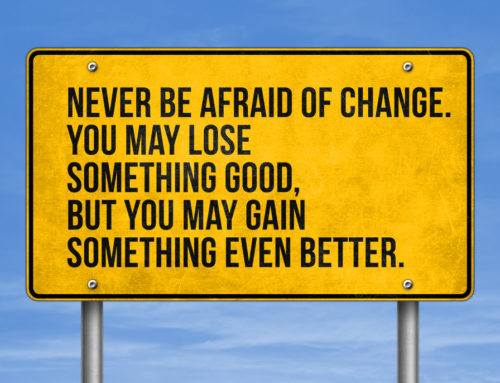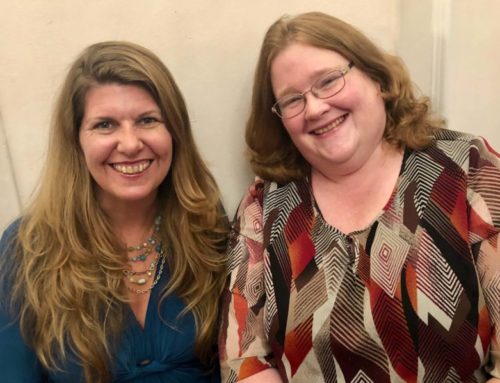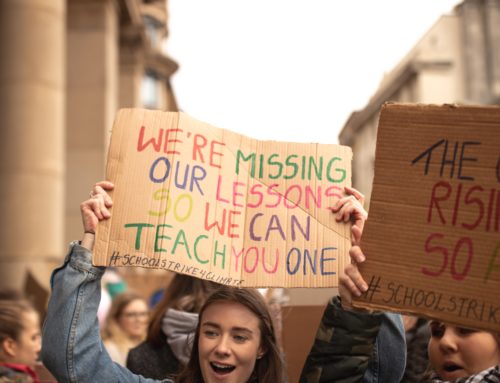The War to Peace® experience: real-life case studies from our workshop attendees. Here, Gill shares her experience of using War to Peace® in an emotional redundancy negotiation.
 The redundancy news came as a big surprise. All the roles in the team where I worked were going to go, and the initial communication wasn’t handled as smoothly as it could have been, so emotions were running high when negotiations about the settlement began.
The redundancy news came as a big surprise. All the roles in the team where I worked were going to go, and the initial communication wasn’t handled as smoothly as it could have been, so emotions were running high when negotiations about the settlement began.
There was no doubt, it was going to be a challenging time in terms of exchange of views. However, the experiences I’ve had in that area – including War to Peace® – meant I felt confident putting myself forward to be one of the employees on the consultation group.
Then I was voted to be the Chair – the one who led the employee group.
All of a sudden, there was a lot riding on my ability to stay calm, negotiate effectively, and manage a highly volatile situation.
My experience of War to Peace®
I first discovered War to Peace® via my husband, who had been working on a separate project to link War to Peace® with the the powerful ‘7 Elements’ Negotiation Methodology, which came out of Harvard. The efficacy of War to Peace® is that it helps people to remain un-triggered and authentic (in other words, the best version of themselves), which is especially helpful during interactions that are likely to be highly-charged. This, coupled with the interest-based negotiation tools in the 7 Elements, is a powerful combination.
So I’d experienced War to Peace® as well as having the tools to draw on for the negotiating itself.
Now, it was time to put these into practice.
First things first
One of the first things I did was to acknowledge to myself that this could well be an extremely challenging process. On top of the current issues, there were long standing resentments about things that had previously happened in the company. Some people were really angry, really upset; others had completely checked out of the process and needed to re-engage.
I started by asking myself: “How can I make sure that whatever happens, I am able to be in the moment where we can get the most done?”
I knew that was what I had to be sure of, in order to handle whatever unexpected things came up. To know that if a decision, action or behaviour triggered me, I’d be able to return to a place of being at Peace so that I could continue to move things forward as effectively as I could.
And I certainly needed to draw on that during the process.
The redundancy negotiation in practice
To give you an idea of the tensions involved: the first meeting, which I was only able to attend remotely, was a five hour teleconference – and it quickly escalated into an intense interaction.
A lot of my role involved communicating difficult news to the other employees; things that simply weren’t going to be changed. At times there was conflict within the consultation group; we had some legal involvement that didn’t always feel constructive. There were plenty of instances when things other people did or said would previously have made me furious.
Using War to Peace®, I was able to step away, and understand the ‘why’ behind those actions: someone who’s unhappy and doesn’t feel heard, for example.
I really found I could look beyond whatever behaviours were there. It put me in the best place possible to focus on the outcome – which was, ultimately, so much more effective than feeling angry or upset about other people’s behaviour.
I had a language I could use to explain this to people too, even if they weren’t in the same place. I was able to say “It’s not that I’m not cross, or I don’t understand. I’m simply trying to find a way for us all to express our feelings without jeopardising something that we might have had agreed.”
The outcome…
When it was all over, a colleague was keen to acknowledge my role. They said that the way I’d been during the negotiations had really changed people’s focus, in a way that had a huge impact on the outcome.
Certain things people quite rightly had a gripe about we couldn’t change. The only thing we could do was explain why they had happened and make sure nothing like that happened again.
What we could do was work on other things; like fair remuneration for past work. Because those decisions were made closer to home, we were able to get people some quite significant financial compensation, depending on their position in the company. If we’d only focused on the things that people were unhappy about, this simply wouldn’t have happened.
The things we could change we did change, and a couple of the other decisions were really softened. Not just what was happening, but in the way we were communicated to. There was a specific letter which apologised for previous errors in communication, and overall the langauge of the communications became much more helpful; understanding rather than dictatorial.
How War to Peace® helped
I think without using the War to Peace® methodology, the situation could have been a total disaster. Instead, we were able to keep things constructive.
I reminded people at times that industries are never as big as you think they are – in high-emotion situations, it’s vital not to burn your bridges. You never know when someone you’re in conflict with will end up being a colleague, or your boss, at a later date. To put the best foot forward for yourself, it’s really important to be aware of how you’re being. You won’t want to be in a place where you’re so angry, that it spills over into how you show up at future interviews.
I felt I was able to offer some kind of map that said “Remember to be the best that you can be, even while you’re seeking the outcome that you want”.
Without War to Peace®, there’s no way I would have had the propensity to be able to do it. After all, I’m not a robot – I still have things that trigger me! But I also know I don’t have to take things personally – and I’ve learned, crucially, how to choose how I feel about things, rather than being hijacked by my emotions.
I have real solutions that mean I don’t get stuck in emotional ruts and instead have concrete ways of changing things. Even if you’ve been fabulous at identifying places you get stuck or triggered, and being aware of them, having ways of getting yourself out of that place and changing how you’re being just transforms everything.
Over to you
- Have you ever experienced redundancy, whether you were the one leaving the company, or having to convey the news to others? What was it like?
- What tools and resources do you draw on in high-emotion scenarios like this one?
- Do you feel confident in your ability to advocate effectively for what you want without letting emotion take over?
Leave a comment below letting us know your thoughts.
War to Peace® workshops 2017-8
Our next open access workshop is on 13 July 2018. We have just 9 spaces left! Click here to find out more and book your place.
Ready to find out what the impact could be on your team sooner? We’ve been running in-house workshops using our award-winning methodology for over a decade; simply click here to get in touch or call us on +44 (0) 20 8191 7072 and let us know what you’re looking for. To be the first to hear about our new open-access workshop dates, and get free monthly tips and strategies for your relationship challenges, just leave your name and email address below.
P.S. pass it on!
If you know a leader who might find this article helpful, let them know. Share it by using one of the buttons below.
Photo by Breather on Unsplash






Leave A Comment